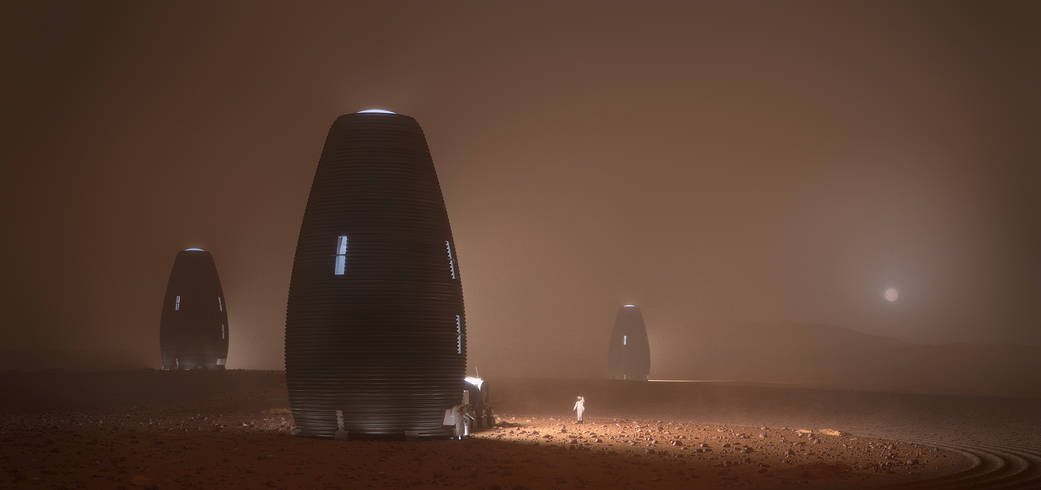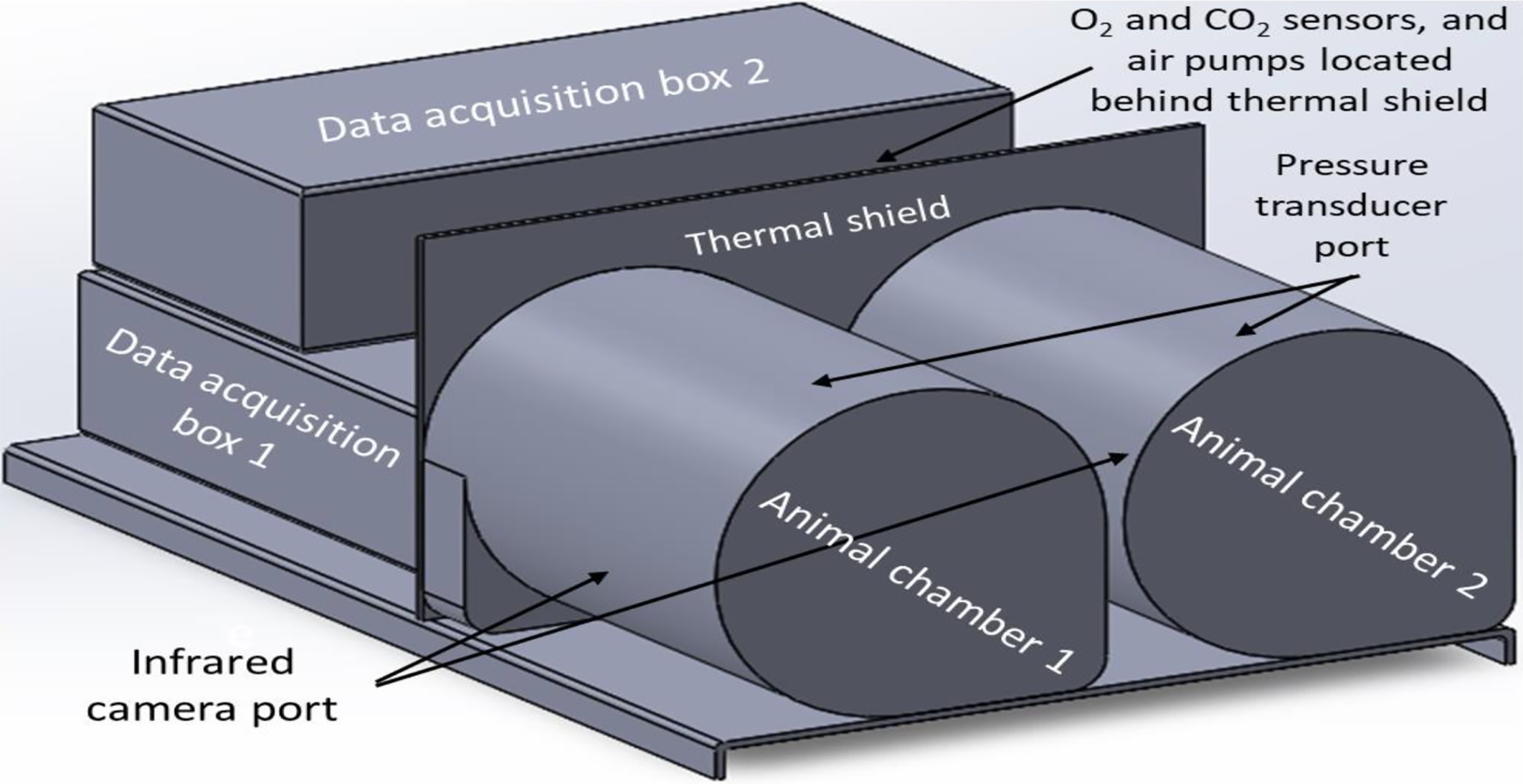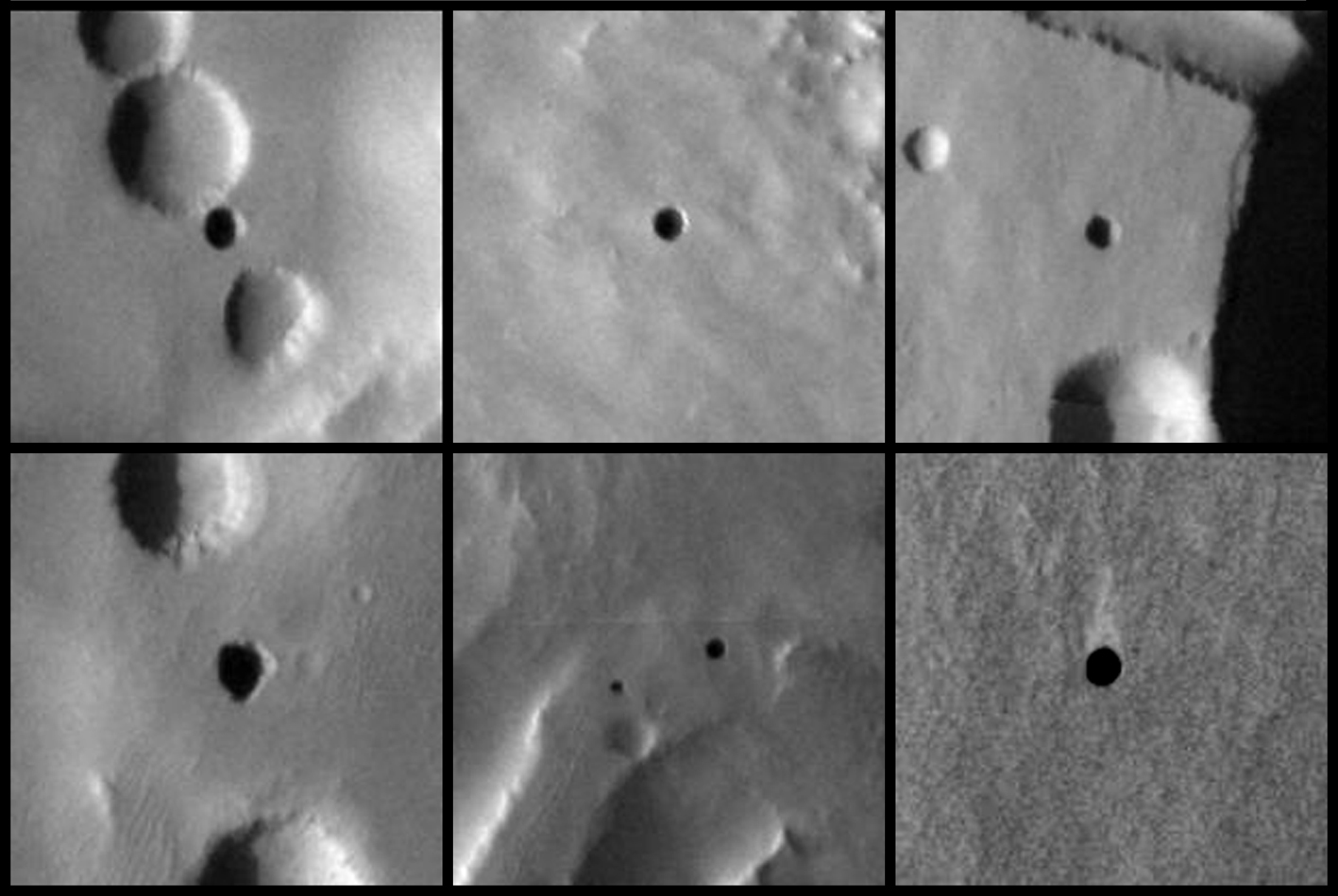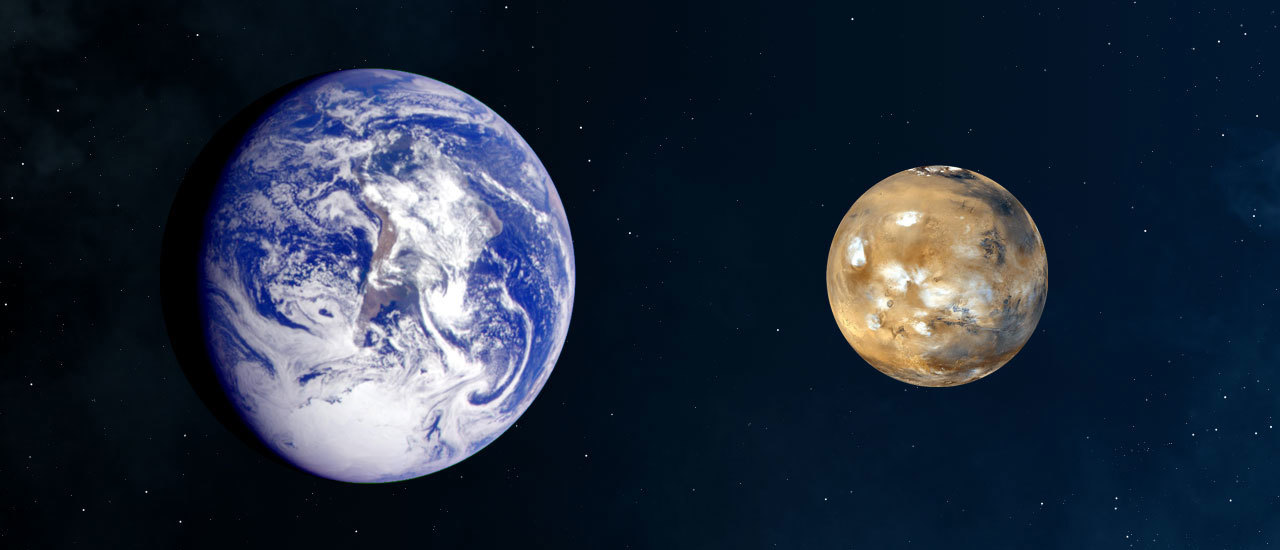We are all too familiar of the Moon’s effect on our planet. It’s relentless tug causes our tides but even Mars, which is always at least 55 million kilometres away, can have a subtle effect too. A study has revealed a 2.4 million year cycle in the geological records that show the gentle warming and cooling of our oceans. The records match the interactions between the orbits of Earth and Mars over the longest timescales. These are known as the ‘astronomical grand cycles’ but to date, not much evidence has been found.
Continue reading “Gravity From Mars has an Effect on Earth’s Oceans”Ingenuity Won’t Fly Again Because It’s Missing a Rotor Blade
Ingenuity has been the first aerial vehicle on another world. NASA announced the end of the Martian helicopter’s life at the end of its 72nd flight. During the flight there had been a problem on landing and, following the incident a few photos revealed chips in one of the rotor blades but nothing too serious. New images have been revealed that show the craft is missing one of its rotor blades entirely!
Continue reading “Ingenuity Won’t Fly Again Because It’s Missing a Rotor Blade”Electrodes in Spacesuits Could Protect Astronauts from Harmful Dust on Mars

To quote NASA associate administrator Jim Reuter, sending crewed missions to Mars by 2040 is an “audacious goal.” The challenges include the distance involved, which can take up to six months to traverse using conventional propulsion methods. Then there’s the hazard posed by radiation, which includes increased exposure to solar particles, flares, and galactic cosmic rays (GCRs). And then there’s the time the crews will spend in microgravity during transits, which can take a serious toll on human health, physiology, and psychology.
But what about the challenges of living and working on Mars for several months at a time? While elevated radiation and lower gravity are a concern, so is Martian regolith. Like lunar regolith, dust on Mars will adhere to astronauts’ spacesuits and inflict wear on their equipment. However, it also contains harmful particles that must be removed to prevent contaminating habitats. In a recent study, a team of aerospace engineers tested a new electrostatic system for removing Martian regolith from spacesuits that could potentially remove harmful dust with up to 98% efficiency.
Continue reading “Electrodes in Spacesuits Could Protect Astronauts from Harmful Dust on Mars”Ground-Based Lasers Could Accelerate Spacecraft to Other Stars

The future of space exploration includes some rather ambitious plans to send missions farther from Earth than ever before. Beyond the current proposals for building infrastructure in cis-lunar space and sending regular crewed missions to the Moon and Mars, there are also plans to send robotic missions to the outer Solar System, to the focal length of our Sun’s gravitational lens, and even to the nearest stars to explore exoplanets. Accomplishing these goals requires next-generation propulsion that can enable high thrust and consistent acceleration.
Focused arrays of lasers – or directed energy (DE) – and lightsails are a means that is being investigated extensively – such as Breakthrough Starshot and Swarming Proxima Centauri. Beyond these proposals, a team from McGill University in Montreal has proposed a new type of directed energy propulsion system for exploring the Solar System. In a recent paper, the team shared the early results of their Laser-Thermal Propulsion (LTP) thruster facility, which suggests that the technology has the potential to provide both high thrust and specific impulse for interstellar missions.
Continue reading “Ground-Based Lasers Could Accelerate Spacecraft to Other Stars”A Magnetohydrodynamic Drive Could Lead to Fuel Stations on Mars

Within the next fifteen years, NASA, China, and SpaceX plan to send the first crewed missions to Mars. In all three cases, these missions are meant to culminate in the creation of surface habitats that will allow for many returns and – quite possibly – permanent human settlements. This presents numerous challenges, one of the greatest of which is the need for plenty of breathable air and propellant. Both can be manufactured through electrolysis, where electromagnetic fields are applied to water (H2O) to create oxygen gas (O2) and liquid hydrogen (LH2).
While Mars has ample deposits of water ice on its surface that make this feasible, existing technological solutions fall short of the reliability and efficiency levels required for space exploration. Fortunately, a team of researchers from Georgia Tech has proposed a “Magnetohydrodynamic Drive for Hydrogen and Oxygen Production in Mars Transfer” that combines multiple functionalities into a system with no moving parts. This system could revolutionize spacecraft propulsion and was selected by NASA’s Innovative Advanced Concepts (NIAC) program for Phase I development.
Continue reading “A Magnetohydrodynamic Drive Could Lead to Fuel Stations on Mars”NASA 2024 NIAC Program Selects Deep-Space Hibernation Technology for Development

In the next fifteen years, NASA, China, and SpaceX will make the next great leap in space exploration by sending the first crewed missions to Mars. This presents many challenges, not the least of which is distance. Even when they are closest to each other in their orbits (aka. when Mars is in Opposition), Mars can still be up to 55 million km (34 million mi) from Earth. Using conventional propulsion (chemical rockets), a one-way transit can last six to nine months, which works out to a total mission time (including surface operations) of about three years.
That’s a very long time for people to be in microgravity, not to mention exposed to solar and cosmic radiation. To address this, NASA is investigating advanced propulsion methods that will reduce transit times and hibernation technologies that will allow crews to sleep through most of their voyage. This year, the NASA Innovative Advanced Concepts (NIAC) program selected the Studying Torpor in Animals for Space-health in Humans (STASH) experiment, a new method for inducing torpor developed by Ryan Sprenger and colleagues at the California-based biotechnology firm Fauna Bio Inc.
Continue reading “NASA 2024 NIAC Program Selects Deep-Space Hibernation Technology for Development”Future Mars Helicopters Could Explore Lava Tubes

The exploration of Mars continues, with many nations sending robotic missions to search for evidence of past life and learn more about the evolution of the planet’s geology and climate. As of the penning of the article, there are ten missions exploring the Red Planet, a combination of orbiters, landers, rovers, and one helicopter (Ingenuity). Looking to the future, NASA and other space agencies are eyeing concepts that will allow them to explore farther into the Red Planet, including previously inaccessible places. In particular, there is considerable interest in exploring the stable lava tubes that run beneath the Martian surface.
These tubes may be a treasure trove of scientific discoveries, containing water ice, organic molecules, and maybe even life! Even crewed mission proposals recommend establishing habitats within these tubes, where astronauts would be sheltered from radiation, dust storms, and the extreme conditions on the surface. In a recent study from the University Politehnica Bucuresti (UPB), a team of engineers described how an autonomous Martian Inspection Drone (MID) inspired by the Inginuity helicopter could locate, enter, and study these lava tubes in detail.
Continue reading “Future Mars Helicopters Could Explore Lava Tubes”A Biocatalytic Reactor for Detoxifying Water on Mars!
Mars is the next frontier of human space exploration, with NASA, China, and SpaceX all planning to send crewed missions there in the coming decades. In each case, the plans consist of establishing habitats on the surface that will enable return missions, cutting-edge research, and maybe even permanent settlements someday. While the idea of putting boots on Martian soil is exciting, a slew of challenges need to be addressed well in advance. Not the least of which is the need to locate sources of water, which consist largely of subsurface deposits of water ice.
Herein lies another major challenge: Martian ice deposits are contaminated by toxic perchlorates, potent oxidizers that cause equipment corrosion and are hazardous to human health (even at low concentrations). To this end, crewed missions must bring special equipment to remove perchlorates from water on Mars if they intend to use it for drinking, irrigation, and manufacturing propellant. This is the purpose of Detoxifying Mars, a proposed concept selected by the NASA Innovative Advanced Concepts (NIAC) program for Phase I development.
Continue reading “A Biocatalytic Reactor for Detoxifying Water on Mars!”NASA Selects New Technology to Help Search for Life on Mars

The day when human beings finally set foot on Mars is rapidly approaching. Right now, NASA, the China National Space Agency (CNSA), and SpaceX have all announced plans to send astronauts to the Red Planet “by 2040”, “in 2033”, and “before 2030”, respectively. These missions will lead to the creation of long-term habitats that will enable return missions and scientific research that will investigate everything from the geological evolution of Mars to the possible existence of past (or even present) life. The opportunities this will create are mirrored only by the challenges they will entail.
One of the greatest challenges is ensuring that crews have access to water, which means that any habitats must be established near an underground source. Similarly, scientists anticipate that if there is still life on Mars today, it will likely exist in “briny patches” beneath the surface. A possible solution is to incorporate a system for large-scale water mining operations on Mars that could screen for lifeforms. The proposal, known as an Agnostic Life Finding (ALF) system, was one of thirteen concepts selected by NASA’s Innovative Advanced Concept (NIAC) program this year for Phase I development.
Continue reading “NASA Selects New Technology to Help Search for Life on Mars”NASA Tests Out 3D-printed Rotating Detonation Rocket Engine!

Looking to the future, NASA is investigating several technologies that will allow it to accomplish some bold objectives. This includes returning to the Moon, creating the infrastructure that will let us stay there, sending the first crewed mission to Mars, exploring the outer Solar System, and more. This is particularly true of propulsion technologies beyond conventional chemical rockets and engines. One promising technology is the Rotating Detonation Engine (RDE), which relies on one or more detonations that continuously travel around an annular channel.
In a recent hot fire test at NASA’s Marshall Space Flight Center in Huntsville, Alabama, the agency achieved a new benchmark in developing RDE technology. On September 27th, engineers successfully tested a 3D-printed rotating detonation rocket engine (RDRE) for 251 seconds, producing more than 2,630 kg (5,800 lbs) of thrust. This sustained burn meets several mission requirements, such as deep-space burns and landing operations. NASA recently shared the footage of the RDRE hot fire test (see below) as it burned continuously on a test stand at NASA Marshall for over four minutes.
Continue reading “NASA Tests Out 3D-printed Rotating Detonation Rocket Engine!”


